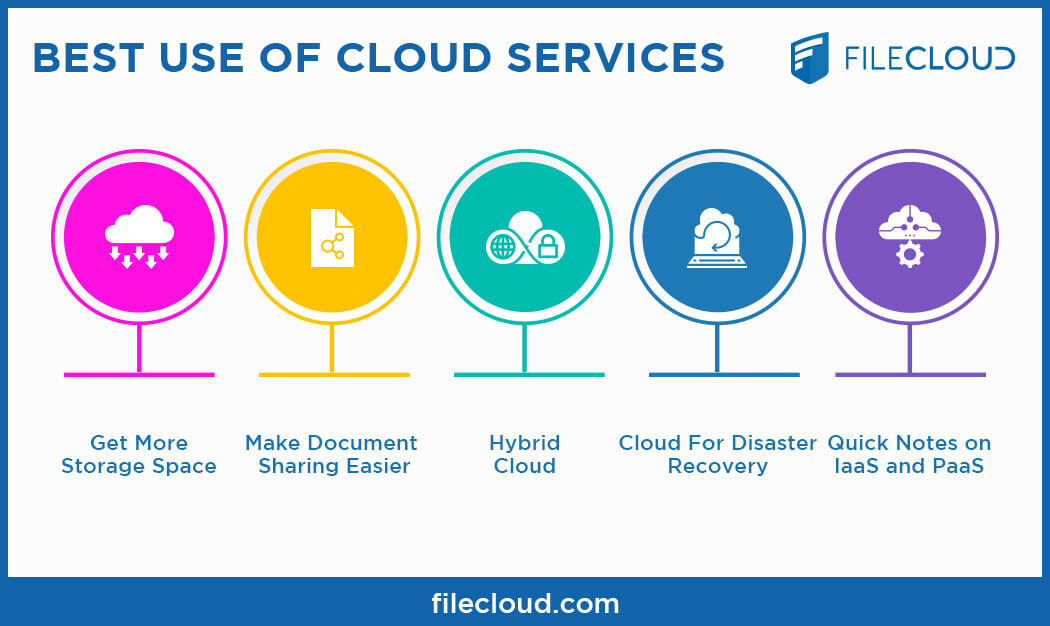Streamline IT Management With Cloud Solutions
Cloud solutions have actually emerged as a practical option for companies looking to enhance effectiveness, lower prices, and improve total IT performance. Exactly how exactly do these cloud services change conventional IT management practices? Let's explore the transformative influence of leveraging cloud solutions on IT procedures and the essential considerations for effective application.
Benefits of Cloud Provider

Moreover, cloud services enable organizations to boost their operational efficiency by simplifying procedures and decreasing the time and sources needed for managing IT facilities. With cloud services, organizations can automate regular tasks, such as software updates and data backups, liberating IT teams to concentrate on even more tactical efforts that drive service value.

Boosted Scalability and Versatility
Cloud solutions give services with exceptional scalability and adaptability in handling their IT resources successfully. With cloud services, companies can quickly scale up or down their computer resources, storage capacity, and network bandwidth to satisfy transforming requirements without the requirement for substantial ahead of time investments in hardware.
Additionally, cloud solutions offer the adaptability for employees to gain access to business data and applications from anywhere, any time, and from any tool with a net connection. This ability boosts productivity and collaboration amongst remote groups or employees operating in various locations. Furthermore, cloud solutions provide the flexibility to pick from a variety of solution designs, such as Infrastructure as a Service (IaaS), Platform as a Service (PaaS), or Software as a Solution (SaaS), based upon the details demands of the company. The boosted scalability and flexibility supplied by cloud services encourage organizations to enhance their IT operations and stay nimble in today's dynamic market setting.

Cost-Effectiveness and Cost Savings
With the capacity to efficiently designate sources based on demand, companies utilizing cloud services can harness significant cost-effectiveness and recognize significant savings in their IT operations. In addition, cloud solutions reduce upkeep costs by changing the obligation of equipment maintenance and software application updates to the service company. In general, the cost-effectiveness and savings accomplished through cloud solutions enable organizations to reapportion sources in the direction of advancement and development initiatives.
Improved Security and Compliance
Enhancing the overall safety and security stance and making sure regulative conformity are paramount considerations for businesses leveraging cloud solutions in their IT monitoring techniques. Cloud solution companies use advanced protection measures, such as data security, multi-factor authentication, and automated backups, which can boost a business's safety structure. These companies likewise follow rigid governing requirements, such as GDPR, HIPAA, and PCI DSS, helping organizations meet compliance needs better.
Implementing cloud services can improve linked here protection by offering centralized control over gain access to administration, monitoring, and information protection. This central strategy simplifies security administration and makes certain regular application of protection policies across the organization. In addition, cloud solutions often use real-time protection updates and patches, reducing the threat of vulnerabilities and potential violations.
Ideal Practices for Cloud Execution
Executing cloud solutions efficiently requires a structured approach that includes thorough planning and thorough implementation. To guarantee a smooth shift to the cloud, companies should start by performing a detailed assessment of their present IT facilities and identifying which workloads are ideal for migration. It is important to develop clear purposes and specify essential performance indications (KPIs) to determine the success of the cloud application.
One of the most effective techniques for cloud implementation is to thoroughly choose a cloud service supplier that aligns with the organization's demands in regards to safety, scalability, cost-effectiveness, and conformity. Furthermore, developing a detailed movement plan that details the steps included, timelines, and obligations is critical for an effective application.
Routinely enhancing and monitoring cloud sources to make sure efficient performance and expense administration is another vital aspect of cloud application finest practices. Continuous assessment of the cloud setting and remaining educated concerning updates and new functions used by the cloud service provider can better boost the company's cloud strategy. By adhering to these best practices, organizations can improve their IT monitoring and maximize the benefits Extra resources of cloud services.
Conclusion
Finally, leveraging cloud solutions for IT administration offers many benefits, including improved scalability, cost-effectiveness, enhanced safety and security, and conformity. By complying with best techniques for cloud application, companies can enhance their IT operations, automate routine tasks, and enhance resource allowance. This streamlined strategy allows IT groups to concentrate on tactical campaigns and advancement, eventually supplying value to the organization. On the whole, cloud content solutions improve functional performance and agility in managing IT facilities.
In addition, cloud services provide the flexibility to pick from a range of solution versions, such as Infrastructure as a Service (IaaS), System as a Service (PaaS), or Software as a Service (SaaS), based on the certain demands of the service. Additionally, cloud services reduce upkeep costs by shifting the responsibility of equipment upkeep and software updates to the service copyright.Enhancing the general protection stance and making certain regulative compliance are critical factors to consider for organizations leveraging cloud solutions in their IT administration approaches.On a regular basis optimizing and checking cloud resources to make sure efficient efficiency and cost administration is one more vital aspect of cloud application best practices. Continuous examination of the cloud setting and remaining notified regarding updates and brand-new functions provided by the cloud copyright can further improve the company's cloud method.